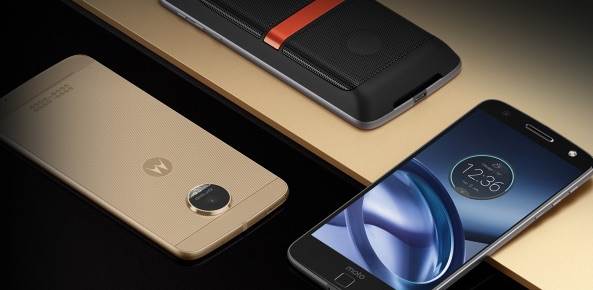
Apple isn’t saying much about its next iPhones, but there’s been plenty of speculation that the giant Plus model will have two camera lenses side by side on the back.
Why? A second lens could make photos sharper or give amateur shutterbugs blurring techniques more common in full-bodied SLR cameras. Apple isn’t revealing anything until its product event in San Francisco next week. For now, though, people can look at how a few other smartphone makers are using two lenses.
Motorola Moto Z
The three Moto Z phones get amazing zoom with a second lens that comes in the form of an optional attachment. Motorola unveiled its third Moto Z model and the attachment, called Hasselblad True Zoom Mod, at the IFA tech show in Berlin on Wednesday.
An accessory normally wouldn’t count, but in this case, it’s an integral part of the phone once you attach it with powerful magnets. The Moto Z has a mix-and-match design that makes it possible to remove its back and replace it with a speaker, a projector or a zoom lens that offers 10-fold magnification — better than what many point-and-shoot cameras offer.
You’d be wrong to think smartphones already offer zoom capabilities by pinching out on the screen. That’s just a software trick that leaves images fuzzy. The camera lens itself is fixed; you need an attachment for true zoom.
With it, a statue of Alexander Hamilton in New York’s Central Park looks as sharp from afar as it would closer up. By contrast, the same statue taken with the regular lens from afar looks dull. It’s possible to make out a New York University logo on a bean-bag toss game board shot with the second lens from across the lawn; with the regular lens, it’s just a blob of purple.
This functionality will cost you, though. The module alone will start at $250 when it comes out in mid-September, or at the high end of what point-and-shoots cost. That’s on top of $400 for the cheapest Moto Z. Motorola says the attachment will appeal mostly to photography aficionados, but the company believes that’s a sizable market.
The results are indeed remarkable, but not flawless. It takes a second or so to focus and shoot, enough to miss a moving subject. Faces can look distorted near the edges of the image, and the second lens doesn’t do extreme close-ups, known as macros. That’s one thing stand-alone cameras still do better.
And the attachment is about as heavy and bulky as a point and shoot.
But the module gives you amazing zoom shots that you can easily share via the phone. That’s not a simple task with most cameras.
LG G5
The G5’s second lens offers an impressive 135-degree wide angle, compared with 78 degrees on the normal one. That’s the difference between getting the entire Colosseum in Rome into a single shot, as opposed to just some of it. At St. Peter’s Basilica in the Vatican City, the wide angle gets you not just Michelangelo’s dome but also the ornate columns holding it up.
With most cameras, you’re shooting as though you lack peripheral vision. With a wide angle, the photo frame expands to almost match your real-life field of view.
Wide angles aren’t always desirable. If you’re shooting an elephant in front of you, you want more of the elephant and less of its surroundings. But wide angles are great when you’re shooting a large landmark or a large group of people from close up.
As with other wide-angle lenses, though, LG’s produces distortion around the edges of the image. Think of how warped fisheye shots look. Columns inside St. Peter’s Basilica look curved rather than straight. Distant objects look even farther away.
The regular lens is what you’ll want most of the time. Of course, you can get something close to a wide-angle shot by installing apps or using built-in panorama features, but it takes time to pan across the landscape, rather than snap once. That software approach also doesn’t work for video.
Huawei P9
One lens captures images in color, the other in black and white, or monochrome. The dedicated lens produces sharper monochrome shots than you can get by letting software bleach out the color from an ordinary image. Huawei says it also lets in more light.
In practice, though, the differences are subtle. Images of colorful street art in New York often look cleaner, with better contrast, using the monochrome lens than by running comparable color shots through a black-and-white software filter. While this will matter to artists, it probably won’t to most users, especially since people rarely take black-and-white shots anyway.
But that monochrome lens promises to help color shots as well. By using sensors for the two lenses in conjunction, the phone can restore some of the detail and light lost to filters in the color sensor. The result is a camera that’s among the top in the class — though recent iPhones and Samsung Galaxy phones do just as well or better with just the color lens.
And despite promises of better lighting, the Galaxy S7 often produced better night shots than the P9.
The dual lenses offer one neat trick: They sense depth, so you can blur out the background to highlight something in the foreground, mimicking an SLR technique done by adjusting the lens aperture.
The P9 isn’t available in the U.S. yet, but Huawei is taking a similar dual-lens approach with the just-announced Honor 8.
© -. -.







